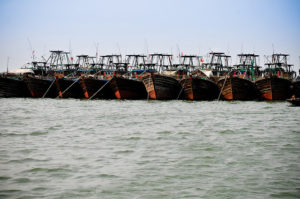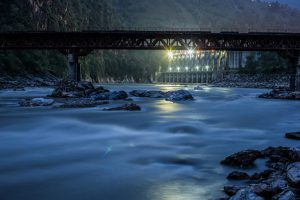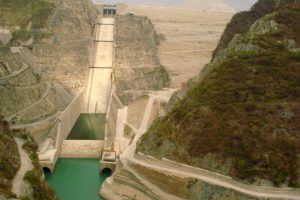Life is tough in the remote villages of the Hindu Kush Himalayas of northern Pakistan, far from the reach of power grids and at the mercy of floods and extreme weather. But by harnessing the glacier fed rivers that tumble down the steep mountains, communities are transforming their lives and future prospects.
“Before the [energy from] hydropower [plants] when clothes needed washing we had to go to the river all day. Now it just takes two hours”, says Gulasim, a women from Bumboret in Chitral, one of the most picturesque Kalasha valleys of northern Pakistan.
![Micro hydropower plants have made the use of washing machines possible [image by Sarhad Rural Support Programme]](/wp-content/uploads/2016/03/washing-machine-Chitral.jpg)
Pakistan has four decades of experience building micro hydropower plants with the cooperation of local communities to bring electricity to these isolated regions. Since 2014, Pakistan’s Rural Support Programmes Network has worked with the “Smart Village Initiative” started by a team based at Cambridge and Oxford universities in the United Kingdom, to further expand energy.
Read also: Chitral pioneers community hydropower schemes
About 70 million people in Pakistan have no access to electricity – the majority of them in rural areas. There are about 3 million households where grid connectivity is not feasible, according to Alternative Energy Development Board of Pakistan. Small hydropower projects and microgrids that generate their own electricity can plug this gap. Yet Pakistan is only producing 128 out of a potential of 3,100 MW of electricity from small hydropower projects.
Read also: How clean energy could transform Pakistan
![Farmer unloading dried persimmons from an electric dryer in Peochar, Swat [image by Sarhad Rural Support Programme]](/wp-content/uploads/2016/03/A-farmer-is-unloading-a-tray-of-dried-red-persimmons-from-electric-dryers-in-Peochar-Swat-e1457593206723.jpg)
The “Smart Village Initiative” covers six regions in Africa, South and Southeast Asia, and Central and South America and aims to provide energy access for remote off-grid villages, where local solutions are both more realistic and cheaper than national grid extension. It brings together scientists and engineers, entrepreneurs, villagers and civil society organisations, policy makers and regulators through country level workshops.
Just like a “smart city”, a “smart village” means providing access to affordable, reliable and clean energy for households and businesses. This energy access particularly benefits women who suffer from the drudgery of collecting fuel wood and the health consequences of breathing in cooking smoke from traditional biofuels, such as animal waste.
In Pakistan the growth of micro hydropower projects has been led by the Aga Khan Rural Support Programme and the Sarhad Rural Support Programme, who have both received the prestigious Ashden international award for their work. They worked with rural support programmes and local village organisations to help communities build micro-hydropower projects across Khyber Pakhtunkhwa, Gilgit–Baltistan, Federally Administered Tribal Area (FATA) and Azad Jammu and Kashmir districts. Communities contribute time and labour (known as “sweat equity”) which creates a sense of ownership and helps sustain the projects. The projects typically generate between 5-100 KW of power.
![Locals contribute the effort to build and maintain the power projects [image by Sarhad Rural Support Programme]](/wp-content/uploads/2016/03/MHPs-2-e1457593326916.jpg)
Obstacles remain
There are a number of obstacles to expanding access to energy. First, the lack of government policy support hinders expansion in remote rural areas. Pakistan’s state regulator, the Alternative Energy Development Board, needs to establish a framework to support off-grid energy solutions. The 2013 National Power Policy does not provide details of how the government will do this. The second big obstacle is the lack of access to finance and capital – and failure to engage the private sector.
While hydropower has taken off, other technologies, particularly solar, have struggled. In this case the lack of cheap energy storage remains one of the main hurdles. In Balochistan, where solar power has brought electricity to remote rural communities, consistent supply can only be ensured by better storage. Further research and development is needed for manufacturing a low cost long life battery for energy storage. The federal government and research institutions must develop partnerships with international research groups engaged in such projects. For example, researchers at Cambridge University are designing more efficient lithium-oxygen batteries to replace the typical lithium-ion batteries. It is such breakthroughs that will transform the villages of the region, and allow their residents to fully access to the opportunities of modernity.
![<p>Electricity from micro hydropower projects powers computers in Chitral [image by Sarhad Rural Support Programme]</p>](https://dialogue.earth/content/uploads/2016/03/Women-Chitral-computer-micro-hydel.jpg)







